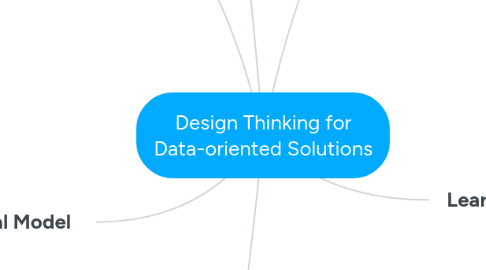
1. Communication
1.1. e-mail: [email protected]
1.2. Sync with MS Teams
1.2.1. Breakout rooms
1.2.2. Course Planning
1.2.2.1. Session 1 (Monday, 3h, 18h-21h)
1.2.2.1.1. 1. Introductions
1.2.2.1.2. 2. Design Brief
1.2.2.1.3. 3. Empathise
1.2.2.2. Session 2 (Monday, 3h, 18h-21h)
1.2.2.2.1. 3. Empathise (cont)
1.2.2.2.2. 4. Define
1.2.2.3. Session 3 (Monday, 3h, 18h-21h)
1.2.2.3.1. 5. Ideate
1.2.2.3.2. 6. Prototype
1.2.2.4. Session 4 (Monday, 3h, 18h-21h)
1.2.2.4.1. 7. Test & Evaluate
1.2.2.4.2. 8. Evolution
1.3. Async with Moodle
1.3.1. Fora
1.3.2. Pedagogical resources
1.4. Async with Fenix
1.4.1. Course marks
1.4.2. Course syllabus
2. Course Recipients
2.1. 02869 - MSIAD - Gestão de Projectos de Sistemas de Business Intelligence
2.2. Co-design for Ambient Assisted Living
2.3. After-work part-time students
3. Pedagogical Model
3.1. Evaluation
3.1.1. Project-based: group project
3.1.2. Class participation
3.1.3. Autonomous group work
3.1.4. Formative evaluation with assignments during class
3.1.5. Summative evaluation with a 10m Pitch of the solution
3.2. Bibliography
3.2.1. Brown, T. (2009). Change by Design: How Design Thinking Transforms Organizations and Inspires Innovation. Harper Collins
3.2.2. Lewrick, M., Link, P., Leifer, L. (2020). The Design Thinking Toolbox, Wiley
3.2.3. Norman, D. (2013). The Design of Everyday Things, Revised and Expanded Edition. MIT Press
3.3. Educator
3.3.1. Miguel Sales Dias
4. Technological Model
4.1. MURAL
4.2. Fenix - ISCTE
4.3. Blackboard Learn
4.4. MSFT Teams
5. Learning Objectives
5.1. O3
5.1.1. Creativity
5.1.2. Technological Innovation
5.1.3. Critical Thinking
5.1.4. Peer Review
5.1.5. Teamwork
5.1.6. Written expression
5.1.7. Oral expression
5.2. O2
5.2.1. Design Thinking Phases
5.2.1.1. 1. Empathy
5.2.1.2. 2. Define
5.2.1.3. 3. Ideate
5.2.1.4. 4. Prototype & Test
5.2.1.5. 5. Evolution
5.3. O1
5.3.1. Design Thinking Applications
5.3.1.1. Product
5.3.1.2. Process
5.3.1.3. Service
5.3.1.4. System
6. Course Modules
6.1. 2. Design Brief
6.1.1. Megatrends 2021
6.1.2. Students choice
6.2. 3. Empathise
6.2.1. Problem Statement + Dot Voting
6.2.2. Interview
6.2.2.1. Interview for Empathy
6.2.2.2. AEIOU Interview
6.2.3. Empathy Map
6.2.4. Jobs To Be Done
6.3. 4. Define
6.3.1. Personas
6.3.2. "As is" Costumer Journeys
6.3.3. "How Might We" + Dot Voting
6.4. 5. Ideate
6.4.1. Brainstorming
6.4.2. 2x2 Matrix + Dot Voting
6.4.3. "To be" Costumer Journey
6.5. 6. Prototype
6.5.1. Prototype to Test
6.5.2. MVP - Minimum Viable Product
6.6. 7. Test & Evaluate
6.6.1. Usability Testing
6.6.2. Task satisfaction
6.6.3. Solution interview
6.7. 8. Evolve
6.7.1. Lean Canvas
6.7.2. Solution Pitch
6.8. 1. Introductions
6.8.1. Introduction to Course
6.8.2. Introduction to Design Thinking
